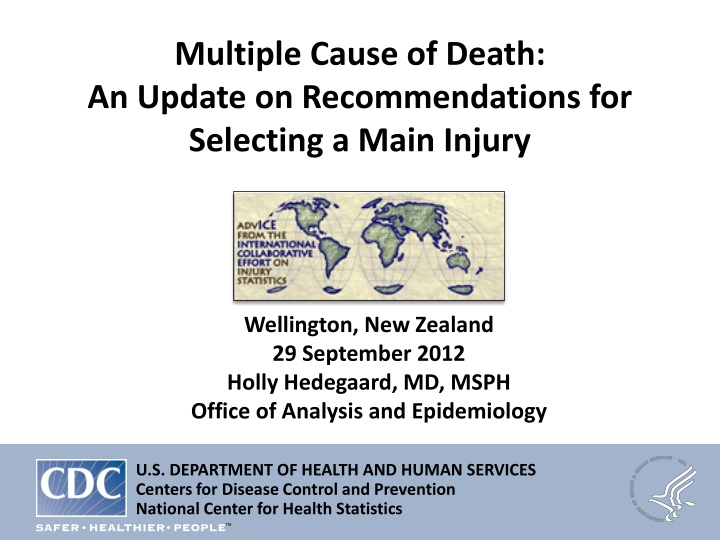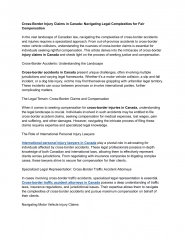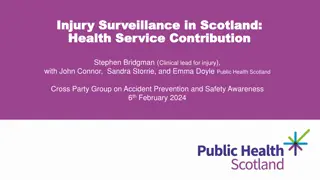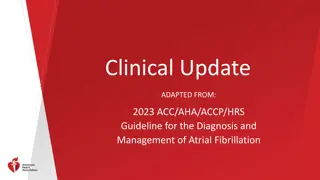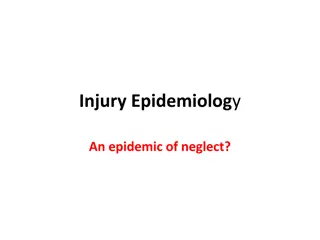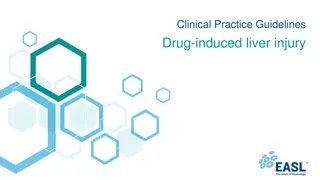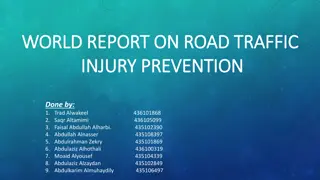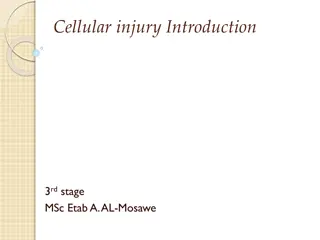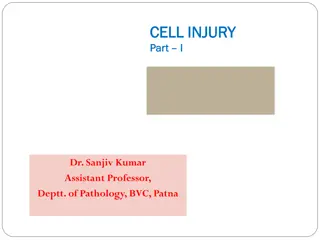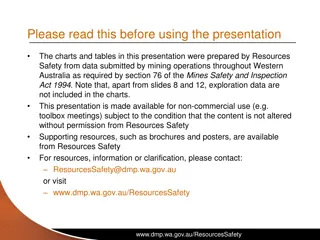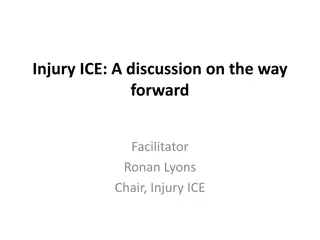Update on Selecting Main Injury: Recommendations
International guidelines for selecting a single main injury from multiple causes of death data, based on severity rankings and prioritization. Process of modifying ICD-10 guideline for better mortality data comparability.
Download Presentation

Please find below an Image/Link to download the presentation.
The content on the website is provided AS IS for your information and personal use only. It may not be sold, licensed, or shared on other websites without obtaining consent from the author.If you encounter any issues during the download, it is possible that the publisher has removed the file from their server.
You are allowed to download the files provided on this website for personal or commercial use, subject to the condition that they are used lawfully. All files are the property of their respective owners.
The content on the website is provided AS IS for your information and personal use only. It may not be sold, licensed, or shared on other websites without obtaining consent from the author.
E N D
Presentation Transcript
Multiple Cause of Death: An Update on Recommendations for Selecting a Main Injury Wellington, New Zealand 29 September 2012 Holly Hedegaard, MD, MSPH Office of Analysis and Epidemiology U.S. DEPARTMENT OF HEALTH AND HUMAN SERVICES Centers for Disease Control and Prevention National Center for Health Statistics
Background International differences in how countries approach multiple cause of death (MCOD) data ICD guidelines to select a single main injury from MCOD data differ by revision ICD-9 Precedence list most severe ICD-10 Select the injury associated with the initiating condition
Process to Modify the ICD-10 Guideline In 2005, WHO Mortality Reference Group (MRG) asked the ICE for input on selecting a main injury and creating a priority ranking list WHO Mortality Reference Group ~25 members, 11 countries, PAHO, WHO Objective: to improve international comparability of mortality data by establishing standardized application and interpretation of the ICD Decisions are forwarded to the WHO Updating and Revision Committee (URC)
Considerations for Selecting a Main Injury in ICD-10 Eliminate trivial and superficial injuries from consideration If there is an obvious causal sequence, select the injury which led to death If there is no obvious causal sequence, select the main injury using priority ranking If several injuries are at the same priority ranking, select the first mentioned
Generation of Severity Measures In 2007, ICE members used Swedish data to develop empirically derived severity rankings Diagnosis-specific Survival Probabilities (DSPs) Calculated using weighted total mention method, including both inpatient and out-of-hospital deaths Created 6 severity groups based on DSP 1=less severe 6=most severe The 6 groups were based on equal number of injuries in each group
Report to MRG ICE submitted the report with the injury severity rankings to the MRG in October 2007 Report also included recommendations to: Compare ICE-MRG severity rankings to other methods Have list reviewed by ICD experts and clinicians (trauma surgeons, medical examiners, etc.) Pilot test in several countries on a sample of injuries
Actions of the MRG in 2008 Developed coding instructions that included the injury priority rankings Recruited countries to test: UK, Brazil, Sweden, Norway, US
Post-Pilot Recommendations Use the priority list on all cases where more than one injury is reported (even if there is a reported sequence of injuries) Revise the priority list so that specified injuries always have a higher priority score than multiple injuries of the same site or unspecified injuries
Actions of the MRG in 2009 Decision to reverse the priority list numbering (1=most severe; 6=less severe) to be consistent with other precedents in the ICD Recruited additional countries to test: India, Australia, Japan
Actions of the MRG in 2010 Deleted poisonings from the priority list Continued to refine the priority group for individual codes 3rd degree burns > 2nd degree burns Multiple fx of cervical spine > Fracture of neck, part unspecified Assign the same rank to codes for multiple injuries as to codes for other specified injuries
Actions of the MRG in 2011 For codes not included in original ICE list, borrowed the injury priority group from other similar conditions Assigned superficial injuries to the lowest priority group Finalized the priority list in April 2011 Ratified in October 2011 Proposed implementation date of 2013
Possible Errors in Categorization? Examples of codes assigned to the lowest priority group: S78.0 Traumatic amputation at hip joint T04.0 Crushing injuries involving head with neck Examples of codes assigned to the highest priority group: S68.9 Traumatic amputation of wrist and hand, level unspecified T69.0 Immersion hand and foot (trench foot)
Questions for the ICE Do we want to review the priority list and instructions? Who By when What tool(s) should be used to check the priority list? Country-specific DSPs International DSPs Clinical expertise AIS
